PROTECT YOUR DNA WITH QUANTUM TECHNOLOGY
Orgo-Life the new way to the future Advertising by AdpathwayRoses are durable beauties, withstanding cold winters and hot summers provided the right cultural conditions. In their lowest hardiness zones, even the hardiest specimens benefit from winter protection. Pruning is part of protecting the ornamentals from frigid temperatures and high winds, which can cause winter kill.
Winter kill causes damage and dieback in rose stems and roots. It occurs with exposure to hard freezes, cold temperatures, drying winds, and freeze/thaw cycles in fluctuating winter conditions. Generally, roses in USDA zones 6 and colder benefit from extra winter protection.
Prune roses now to prevent winter kill, and the long-lived, reliable shrubs reward the effort with resilient reemergence in spring. Light, selective pruning in fall takes them into winter with a solid foundation that lessens winter damage and disease problems, too.
Pruning Roses Against Winter Kill
 Dormant plants handle shaping better than those still growing.
Dormant plants handle shaping better than those still growing.For heavier pruning and shaping, we generally reserve rose pruning for late winter and early spring before new growth emerges. It’s best practice to avoid significant cutback in fall, as pruning can stimulate tender new growth susceptible to cold damage.
Pruning in the fall is selective, depending on the rose type and climate, to prepare roses to overwinter. In cold climates, preventative pruning in combination with extra insulation offers the best defense.
To prune roses to prevent winter kill in the fall, wait until they drop most of their leaves as a signal of dormancy. This is usually after frost, but before frigid conditions. Timing the trim near dormancy helps prevent new growth.
Some degree of winter kill is a normal occurrence for roses in cold climates, depending on seasonal conditions. The extent of the damage lessens with proper pre-winter pruning, waiting until spring to remove visibly damaged branches. With too heavy a cut in fall, followed by trimming damaged stems in winter, short plants may be the result. The potential for winter dieback is another reason to wait until early spring to make drastic cuts.
What to Prune
All roses benefit from pruning away diseased, dead, and declining canes at any time of year to promote overall health. Cut out crossing branches, too, to minimize injury and to promote good airflow.
To prune diseased, dead, or crossing canes, cut them back to the first section of healthy, green growth. Dead canes are brown and brittle, while healthy stems are green with a white, pithy interior.
Long, Whippy Canes
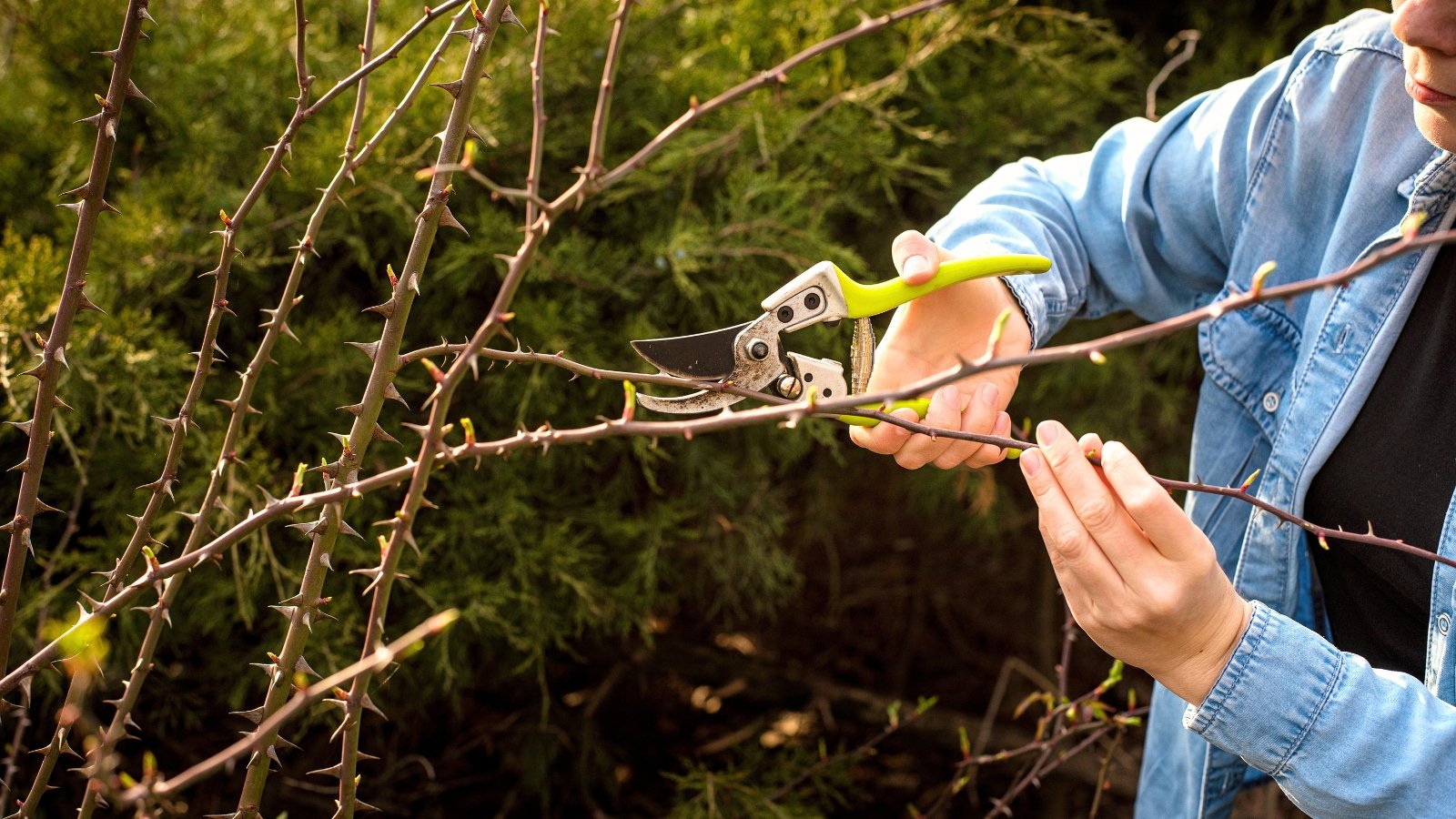 Clearing crowded stems helps airflow and promotes strong growth.
Clearing crowded stems helps airflow and promotes strong growth.Climbing roses and ramblers are quite cold-hardy, but by season’s end, these and other tall specimens may develop long, wayward stems that can compromise health. Remove whippy stems so they don’t break or crack as they blow around in winter winds. Prune out spindly or suckering offshoots to increase airflow, foster the strongest canes, and prevent reversion.
In late fall and into winter, cut out the oldest canes of climbers, ramblers, and shrubs if plants become crowded on the interior. With spring’s flush, train new canes to take their place as primaries.
Beyond light trimming, when you prune these roses to prevent winter kill, protect climbing specimens through winter by securing the canes to their support structure after cutting off any long strays. Wrap the whole plant in burlap, frost cloth, or evergreen boughs and tie them with twine. Mound one foot of soil or mulch at the crown for insulation, removing it before new growth emerges in spring.
Top Heavy Growth
 Wind can’t topple sturdy shrubs with trimmed height.
Wind can’t topple sturdy shrubs with trimmed height.Top-heavy roses can topple and rock in winter winds. With natural freeze and thaw cycles, roots can lift and sustain damage through cold exposure or breakage. Reduce the height of tall stems on top-heavy shrubs to prevent falling over.
Shrub and landscape roses like Knockouts can be cut by one-third, or down to about 30 inches tall. Shortening the height lessens catching the winter wind and removes thin stem ends that are susceptible to exposure.
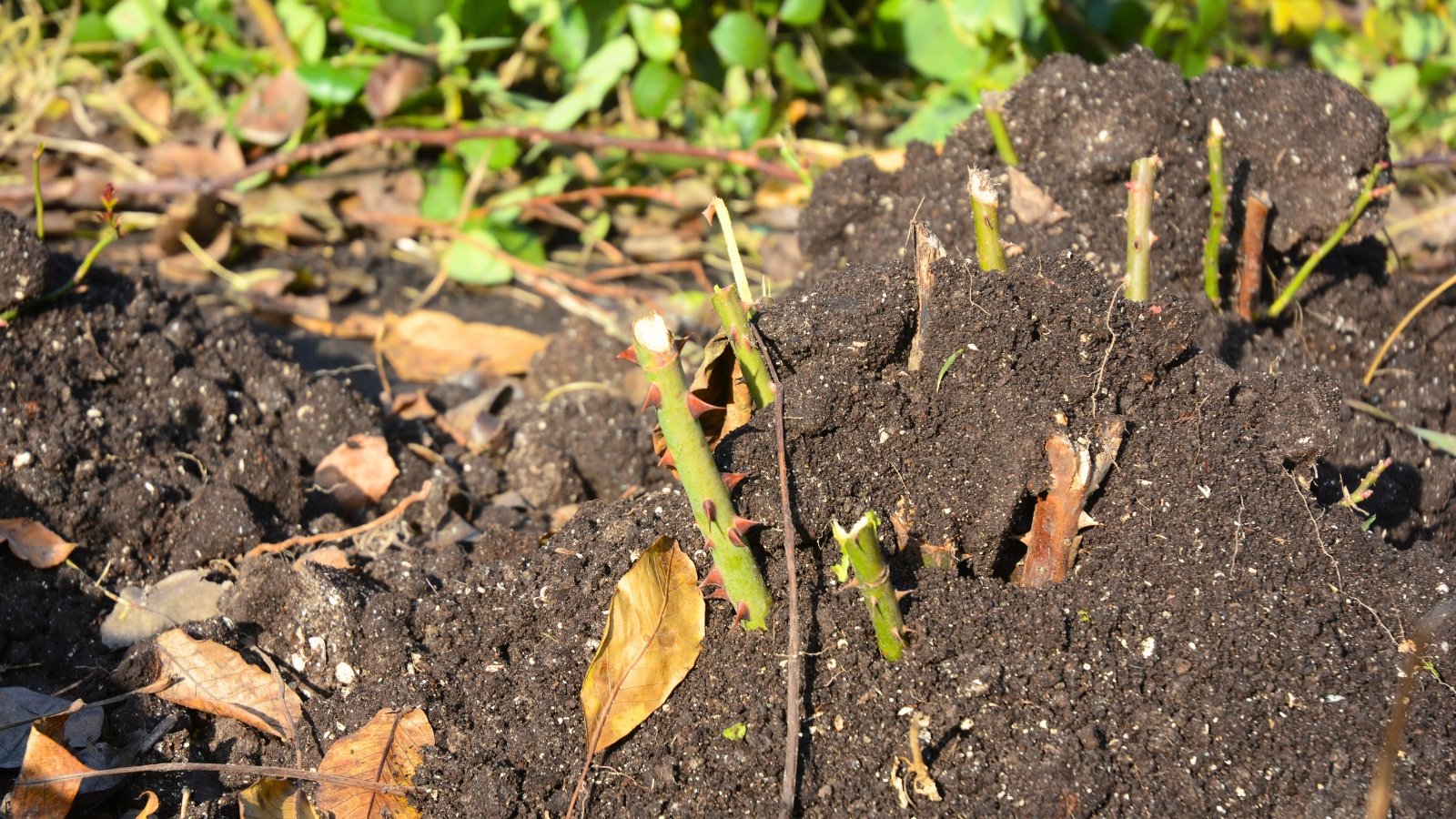 Protect tender unions with soil, leaves, and cages.
Protect tender unions with soil, leaves, and cages.Certain types of roses are more sensitive to cold conditions than others and require protection depending on the growing zone and microclimate. Hybrid teas, floribundas, and grandifloras are most susceptible to damage from low temperatures and rapid fluctuations. Most old garden roses, shrubs, species, and landscape roses are exceptionally winter hardy.
Many modern hybrids are grafted, where the upper growth of one variety is fused with the rootstock of another for hardiness, disease resistance, and other selected traits. The graft union is sensitive to frigid conditions, and if the union is cold-damaged, upper growth suffers. Own root selections are less vulnerable. They grow from cuttings with their original roots without an exposed union.
To protect these roses from winter kill, pruning them to reduce their size to more easily insulate them is helpful. Knee-high, at about 18 to 24 inches, preserves the heart of the canes and crown. Do this cutback after several nights with temperatures below 20°F (-7°C). Mound one foot of soil or mulch at the base, and use a wire cage with leaves as added insulation (more on protective covering, below).
Roses In Pots and Containers
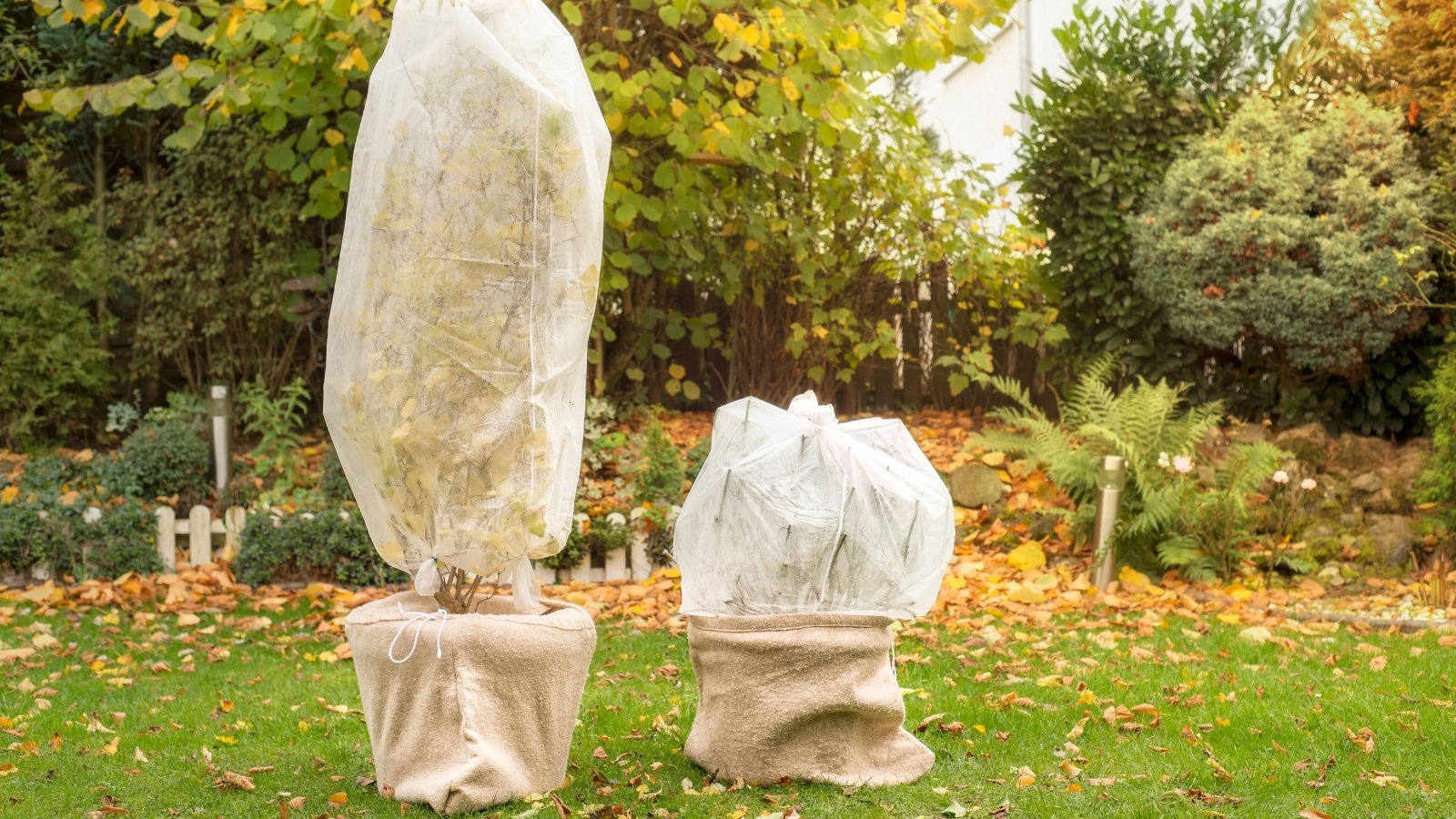 Wrapping containers prevents roots from frost heaving damage.
Wrapping containers prevents roots from frost heaving damage.Roses in containers lack the insulation of the surrounding soil mass, with only a thin wall protecting roots from air temperatures. The potted soil is susceptible to frost heaving, leading to root disturbance and exposure.
In mild climates (zones 7 and warmer), insulate with a thermal blanket or burlap cover during cold snaps and windy occurrences. In colder climates, more protection helps ward off damage. As with protecting borderline in-ground specimens, potted roses in cold climates benefit from trimming to reduce the likelihood of broken stems with moving or with winter protection.
Plan to wrap pots with burlap, frost cloth, or surround with leaves. Or, move potted specimens to an unheated space like a garage, basement, shed, or cold frame for the best protection against the elements. The shrubs benefit from a little natural light and require occasional watering to prevent roots from drying out completely. The ideal indoor temperature range is between 30 and 40°F (-1-4°C).
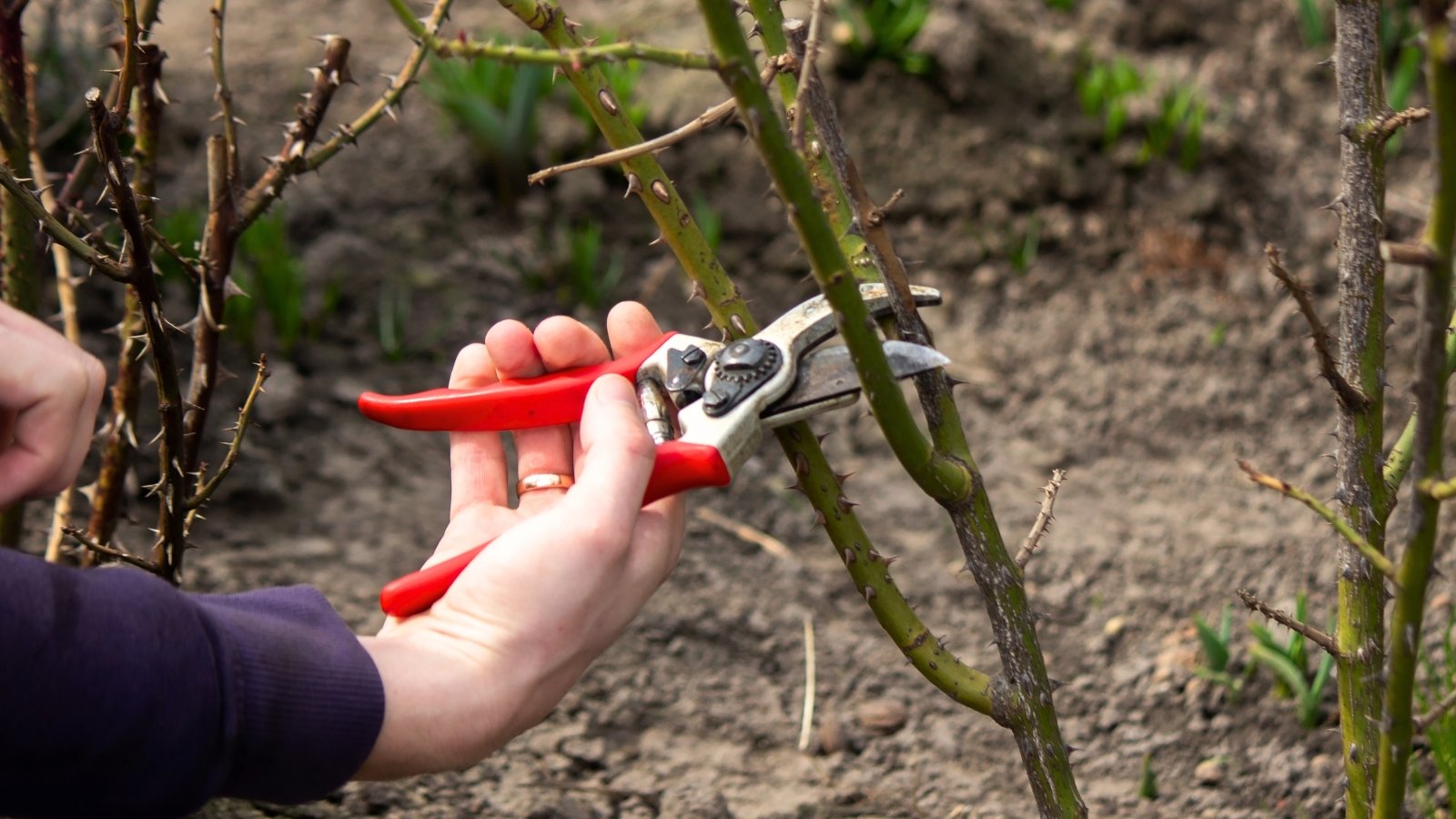 Sterilize blades to stop diseases from spreading between stems.
Sterilize blades to stop diseases from spreading between stems.To prune roses for protection against winter kill, opt for sharp bypass pruners and loppers for thick canes. Since Rosa spp. easily transmit fungal, viral, and bacterial diseases, and sterilizing tools between cuts is best practice.
A simple alcohol wipe on the blades does the job, as does a dip or spray with rubbing alcohol (70% or higher concentration of isopropyl alcohol).
The Proper Cut
 Cutting above buds helps plants recover faster naturally.
Cutting above buds helps plants recover faster naturally.A clean cut with sharp tools is the right cut. Trim canes just above an outer bud or leaf node (where leaflets meet the stem). Make a straight cut, or angle it downward at 45 degrees toward the center of the plant. The goal is to protect the stems from shredding or tearing with a crisp cut.
To boost healthy conditions for successful overwintering, tidying beds and adding extra insulation are useful in addition to preventative pruning.
Remove Debris
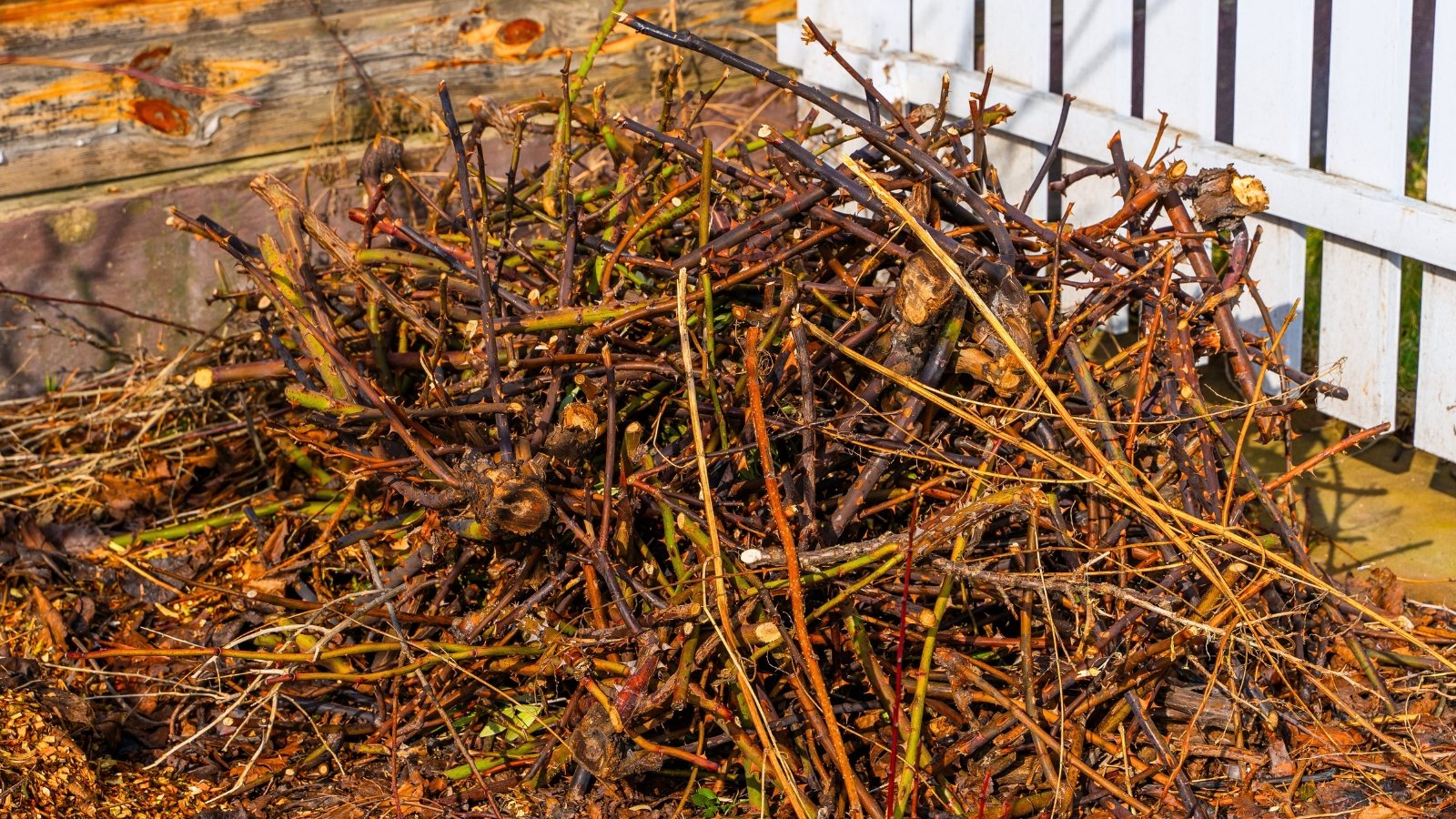 Proper disposal of plant material prevents disease recurrence later.
Proper disposal of plant material prevents disease recurrence later.After a light fall trim, sweep the beds to clear fallen debris. Diseases like black spot overwinter in plant material, like dropped leaves and petals. Removing the debris gets rid of diseased parts from pruning and prevents future spread.
Dispose of clippings by bagging and discarding or burning them. Keep them out of the compost pile to prevent harboring the spores in the amendment.
Insulate
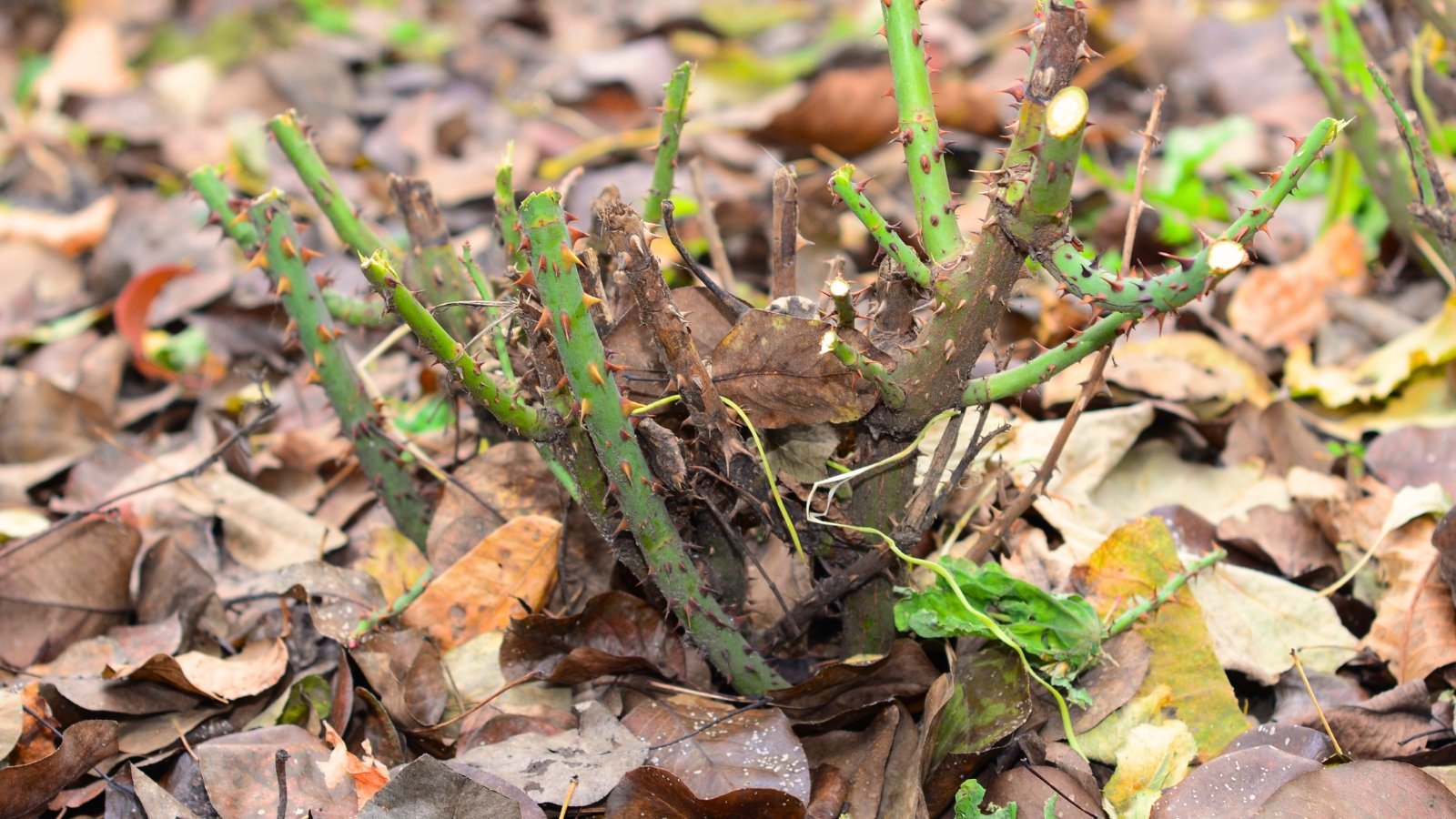 Layer leaves around roots to prevent frost heaving.
Layer leaves around roots to prevent frost heaving.The aim of extra winter protection is to maintain a consistent cold state to avoid stress and exposure to the crown and roots. In zones 7 and above, a three-inch layer of mulch is usually ample for successful overwintering. The mulch provides insulation and temperature regulation while retaining moisture and protecting roots against frost heaving.
In zones 6 and colder, simple techniques like mounding the crowns and insulating with leaves protect the ornamentals from seasonal extremes. Hilling and mounding protect the roots and crown with 8 to 12 inches of mulch at the shrub’s base. Soil, compost, and shredded leaves are good mounding materials.
A wire cage filled with dry leaves is sound protection for both in-ground and potted specimens. After trimming for ease of protection, form chicken wire or other pliable wire fencing into a cylindrical enclosure around the shrub. Fill the frame with leaves to insulate canes, crowns, and roots throughout the season. Place a trash can lid or board, weighted with a brick or rock, to keep snow and rain from compressing the leaves.
Lastly, wrapping is a basic insulating method for roses in beds or pots. Tie the canes loosely with twine or cloth strips and wrap the bundle with burlap or frost cloth. Mound atop the base and roots for coverage. Remove the coverings in late winter and early spring for roots to warm and new growth to emerge.


 14 hours ago
11
14 hours ago
11

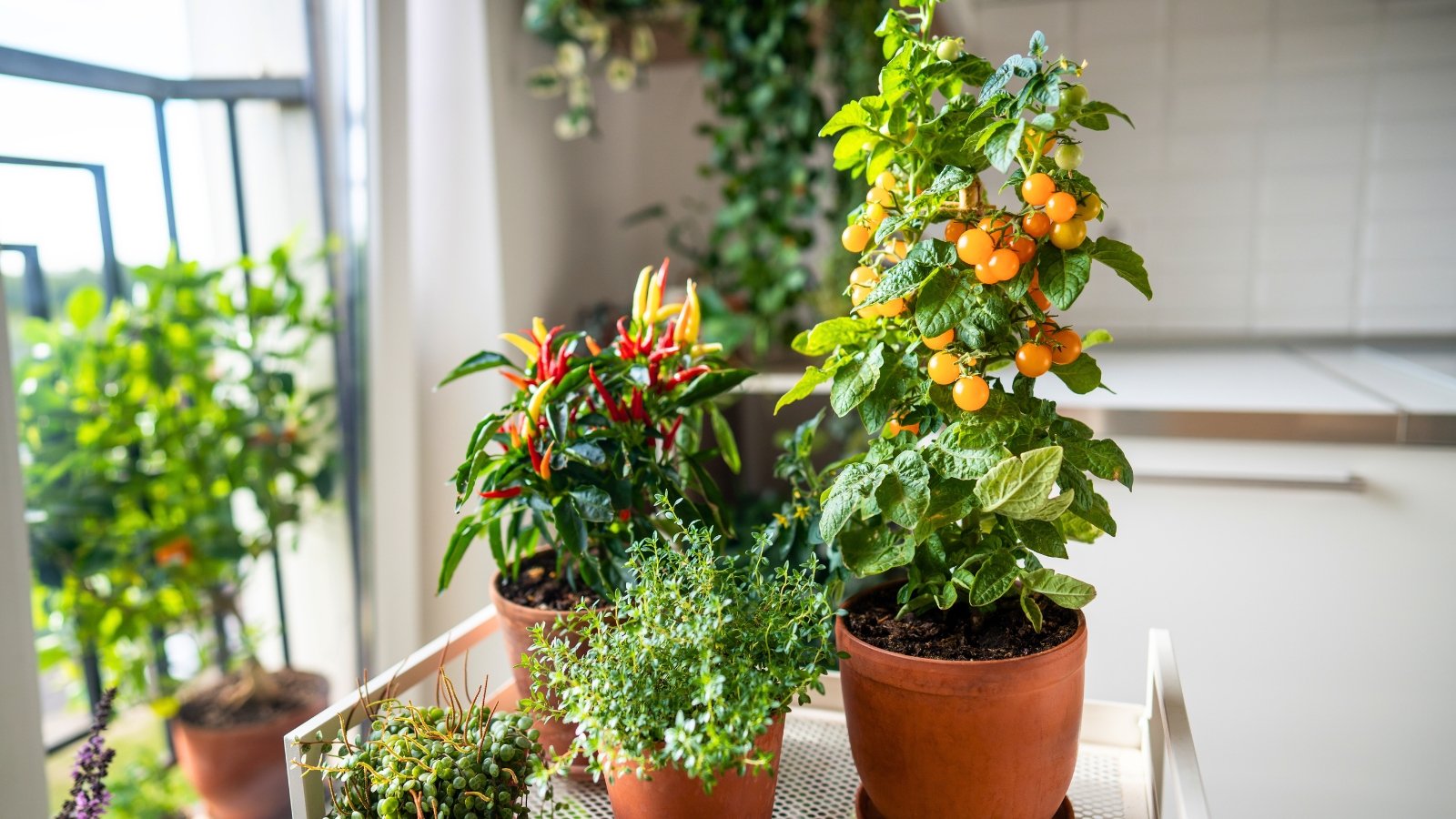
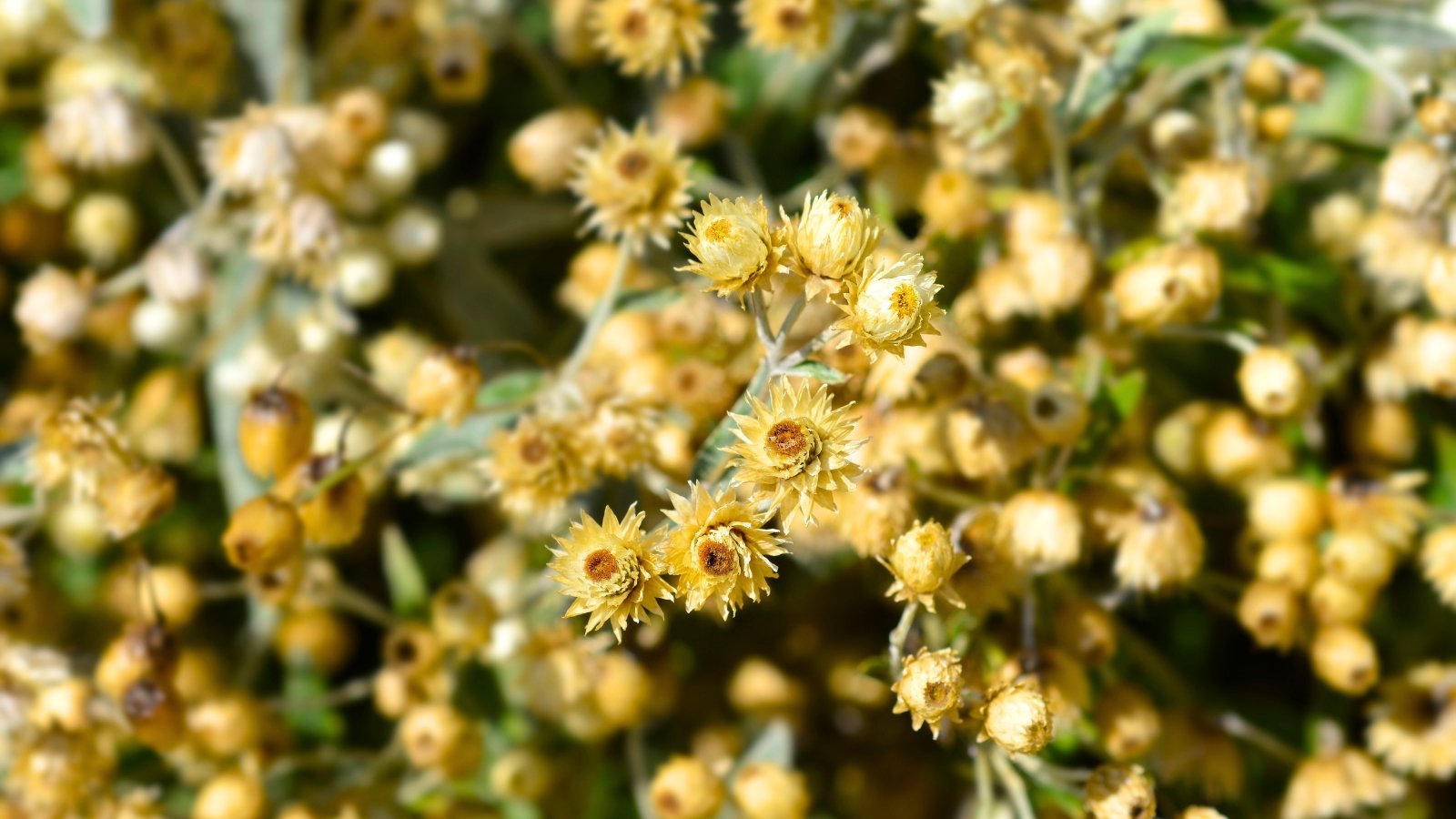


















 English (US) ·
English (US) ·  French (CA) ·
French (CA) ·